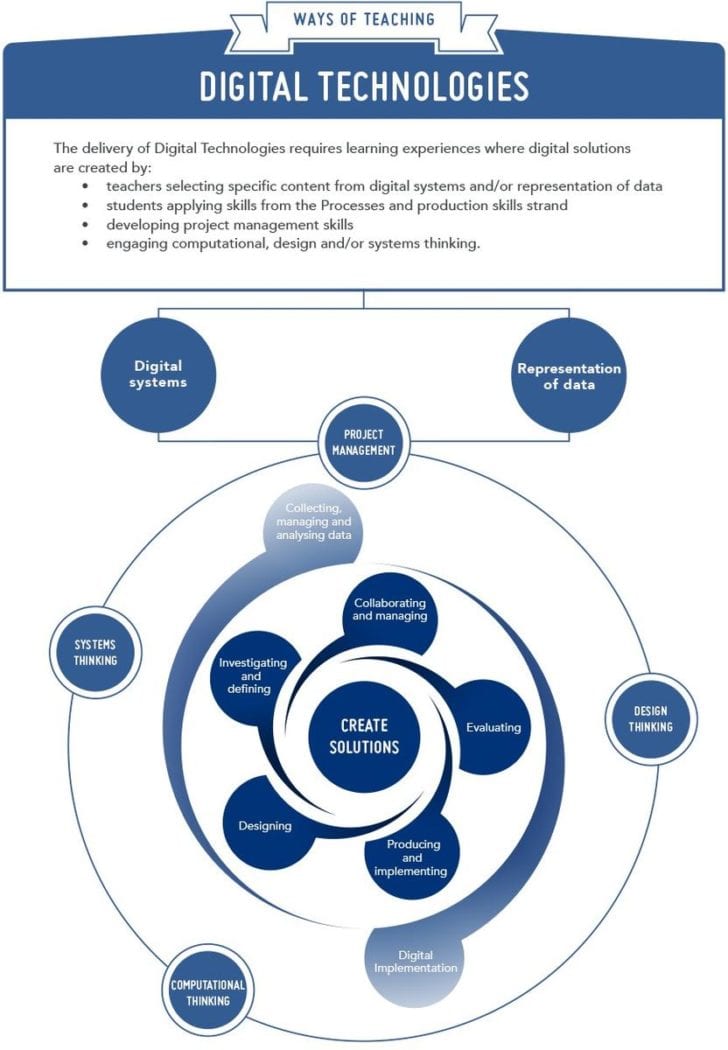Digital Technologies
@ CPSDigital Technologies
Digital systems are everywhere, mobile and desktop devices and networks are transforming learning, recreational activities, home life and work. Digital systems support new ways of collaborating and communicating, and require new skills such as computational and systems thinking. Technologies are an essential problem-solving toolset in our knowledge-based society.
The Western Australian Curriculum: Digital Technologies empowers students to shape change by influencing how contemporary and emerging information systems and practices are applied to meet current and future needs. A deep knowledge and understanding of information systems enables students to be creative and discerning decision-makers when they select, use and manage data, information, processes and digital systems to meet needs and shape preferred futures.
Digital Technologies provides students with practical opportunities to use design thinking and to be innovative developers of digital solutions and knowledge. Digital Technologies enables students to become innovative creators of digital solutions, effective users of digital systems and critical consumers of information conveyed by digital systems.
Digital Technologies in the classroom

Knowledge and Understanding
Digital Systems
The term digital system refers to elements such as hardware, software and networks and their use. There may be many different components that make up one system; for example, a computer has a central processing unit, a hard disk, keyboard, mouse, screen etc. A peripheral device is a digital component that can be connected to a digital system, for example, a digital camera or printer.
Representations of Data
Computers are amazing devices that enable people to do a wide variety of things with them. People can use them to view information, listen to music, play games and more. In order for computers to work, they must represent the information in some way. All data that is stored within a computer, and transferred from or to a computer, is transmitted as a series of electrical signals that are either on or off.
Process & Production Skills
Collecting, managing and analysing data
The term digital system refers to elements such as hardware, software and networks and their use. There may be many different components that make up one system; for example, a computer has a central processing unit, a hard disk, keyboard, mouse, screen etc. A peripheral device is a digital component that can be connected to a digital system, for example, a digital camera or printer.
Digital Implementation
Computers are amazing devices that enable people to do a wide variety of things with them. People can use them to view information, listen to music, play games and more. In order for computers to work, they must represent the information in some way. All data that is stored within a computer, and transferred from or to a computer, is transmitted as a series of electrical signals that are either on or off.
